This article based on a chapter of the book by Paul Thomas on Hindu Religion. Customs and Manners (Describing the Customs and Manners, Religious, Social and Domestic Life, Arts and Sciences of the Hindus, Bombay: D.B. Taraporevala, 1948). In addition to the informative depiction of Jain religion, the photos and illustrations are of special historic interest.
Vardhamana, called Mahavira (the great hero), the founder of Jainism, was a prince of the royal Jnatri clan of Vedeha (modern Bihar), who, like the Buddha, gave up a crown for the staff of the mendicant. He lived in the sixth century B.C. and was an elder contemporary of the Buddha. In East India there was, it appears, a general tendency of revolt against Brahmanism at the time, and the religion Vardhamana founded was marked by this spirit. Though Siddhartha and Mahavira were contemporaries, the religions they founded grew up independently of each other, and the antagonism against Brahmanism, common to both systems, appears to have been a coincidence.
The word 'Jaina' is derived from 'Jina' (the conqueror) by which name Mahavira is also known. The Jains, however, do not consider Mahavira as the sole founder of their religion. They trace their system to twenty-four Tirthankaras (ford-finders) of whom Mahavira is believed to be the last. The Tirthankara who immediately preceded Mahavira is said to be Parshva whose tradition the former is believed to have kept up. Of the other twenty-two Thirthankaras we know little except that they were big made and lived long. Tirthankara Rishabha, for instance, lived for 8,400,000 years and was 500 poles in height. The last two Tirthankaras were of ordinary size; Parshva lived for 100 years and Mahavira for 72. The former according to Jains, lived 250 years before Mahavira but the chronology of the Jains is not very trustworthy and it is probable that Mahavira was a disciple of Parshva. [1]
Vardhamana abandoned his crown when he was thirty years of age. For twelve years he lived the life of an ascetic and at the end of this period, while squatting in the open "with joined hands, exposing himself to the heat of the sun with the knees high and head low, in deep meditation, in the midst of abstract meditation, he reached Nirvana [2] the complete and full, the unobstructed, unimpeded, infinite and supreme, best knowledge and intuition, called Kevala total. When the Venerable One had become an Arhat and Jina he was a Kevalin, omniscient and comprehending all objects. He knew all conditions of the world, of gods, men and demons; whence they come, where they go, whether they are born as men or animals, or become gods or hell-beings; their food, drink, doings, desires, open and secret deeds, their conversation and gossip, and the thoughts of their minds; he saw and knew all conditions in the whole world of living beings."
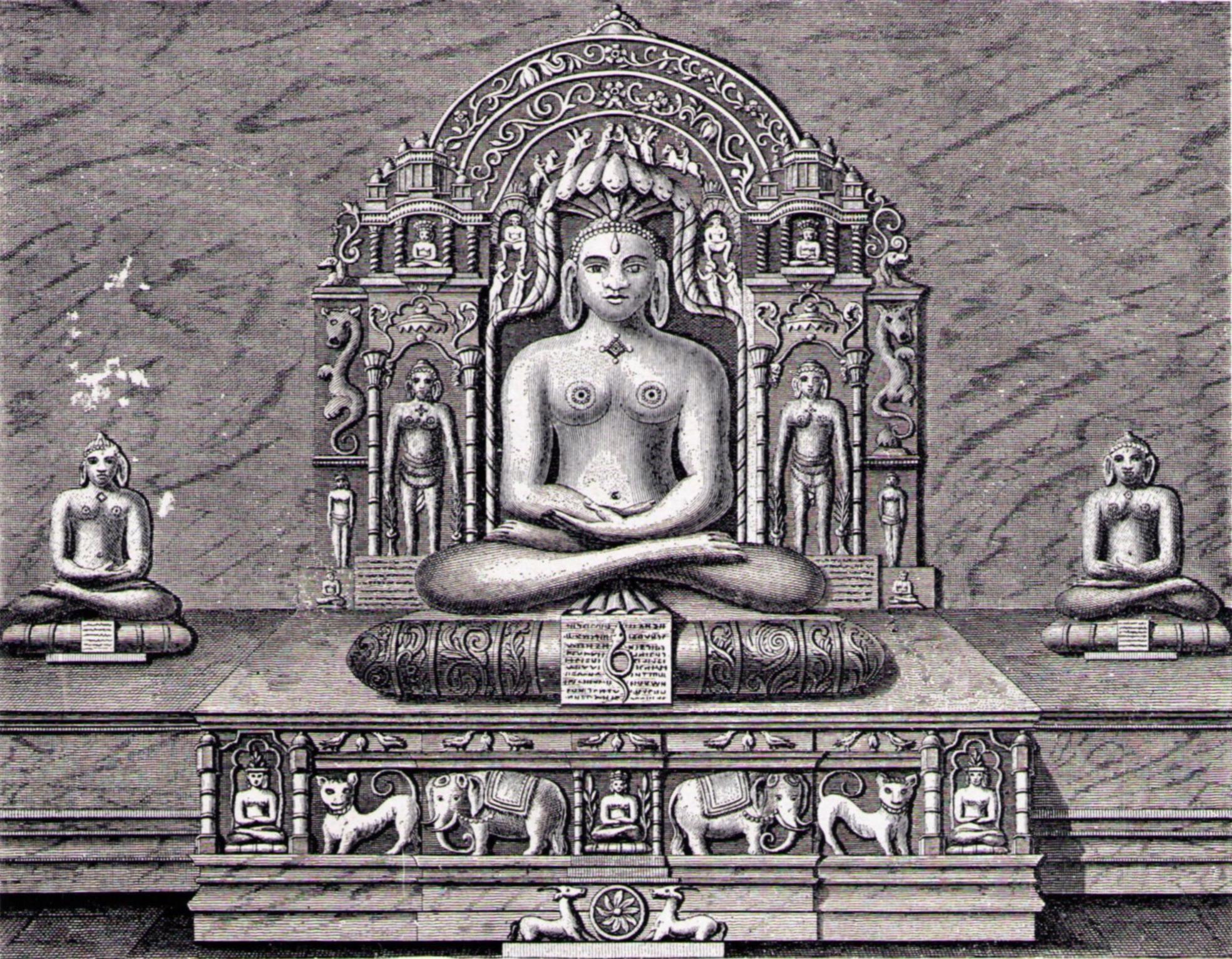
Sculpture in a Cave Temple (from Forbe's 'Oriental Memoirs')
After attaining this knowledge he lived thirty years in the world teaching humanity. It does not appear that Mahavira taught his doctrines to the masses as the Buddha did; his religion did not reach the people. But it gained considerable influence with kings and some intellectuals and it soon spread towards the west and south of India. Chandragupta Maurya, the grandfather of Asoka, as mentioned in the first chapter, is said to have become a convert to Jainism in his old age and lived in the Jain monastery of Shravan Belgola in Mysore.
In the first century of the Christian era a great schism split Jainism into two sects - the Digambaras and the Shvetambaras. The difference between the two sects is not great, but the feeling is. The Shvetambaras, who derive their authority for the practice from Parshva, maintain that wearing of white clothes is not an impediment to the higher life; hence their name Shvetambaras (white robed). The Digambaras (sky-clad), on the other hand, reject all clothing as harmful to a spiritual life, and believe that the sky is the only clothing permissible for those who wish to obtain Nirvana. The Shvetambaras, again, believe in sex equality whereas the Digambaras hold the view that women cannot attain Nirvana. The ascetics and holy men of the Digambara sect practise what they profess, and when they move about from place to place a cordon of lay Jains surround them lest the sight of the great man on the way to Nirvana offend the public. They exclude women from their monastic orders, whereas the Shvetambaras have nunneries for women who choose the higher life.
The philosophy and doctrines of the Jains are not fundamentally different from those of the Buddhists or the Hindus. The Jains have produced few great thinkers whose works can compare favourably with those of the well-known Hindu and Buddhistic philosophers. Jain works which lay claim to philosophical speculation are marked by dogmatism and a flair for figures and exactness. The metaphysics of the Jains is similar to the Sankhya system of Hindu philosophy. Jainism postulates matter and souls (Jivas) as real. The Jiva of the Jains is active and not completely passive as the Purusha of the Sankhya. The Jiva, like the Purusha, has a subtle body consisting of various fine particles and the elevation of the soul and its final release consist in dropping these particles by austerities which, more or less, enables the Jiva to float upwards to Nirvana. The Jains have an elaborate literature which tells us the exact number of these particles and their subdivisions, but it is likely to bore the reader rather than interest him in the subject.
Though the Jains do not believe in a God as the First Cause, they have a pantheon of gods who are lower beings than the Tirthankaras. These gods are themselves engaged in working out their own Nirvana, and as such do not help or hinder humans from working out theirs. Even the Tirthankaras are helpless in this matter. All the same, worship of Tirthankaras and of the gods is recommended because of the inherent power of all forms of true worship to elevate the soul of the worshipper. It is like giving alms with no intention of alleviating the suffering of the beggar, but on the principle that giving away in charity is good for the giver.

Hindu and Jain Mendicants (from Forbe's 'Oriental Memoirs')
According to Jain theories, men are, in some respects, more favoured than gods; for no god can attain Nirvana without being born as man. Only by the practice of the discipline taught by the Tirthankaras is Nirvana possible, and man alone can practise them. Gods are calculated to undergo exactly 400,000 rebirths in the celestial plane while beings on earth are reborn 1,000,000 times; of the latter not more than eight births can be in human form. Women, according to the Digambaras, have to be reborn as men before they can attain Nirvana.
The Jain view of life is even more pessimistic than that of Buddhism, and its discipline is ascetic and rigorous. The monks and nuns have to take the five vows of the order and strictly observe them. The five vows are:
- Abstention from taking life,
- Abstention from falsehood,
- Abstention from stealing,
- Abstention from sexual intercourse, and
- Abstention from worldly possessions.
Jain monks who take these vows are known as Nirgranthas (freed from fetters). For the laity the discipline is less strict. They too have to take their vows but with certain reservations. Sexual intercourse is permitted to the laity within lawful limits and acquisition of wealth to a certain extent.
The Jains are probably the only people in the world who take the law prohibiting killing quite seriously. Jain monks will not eat after nightfall lest inadvertently insects get into the meal and get killed while eating. They will not drink water without straining it several times. While moving about they take care to cover their mouths with a piece of cloth suspended from the upper lip so that insects flying against their faces may not be trapped in their mouths. Even the eating of certain vegetables supposed to be 'alive' is prohibited. Nor is this virtue practised on the negative side only; active support to living beings, especially to cattle and insects, is given by Jains. Dropping grain near ant hills for ants to eat is a common sight on the roads and lanes where Jains live. Mosquitos, bugs and other bloodsucking insects are also considered worthy of attention. Wealthy Jains pay able bodied men, who can spare some blood, to sleep on their bug-ridden cots till the bugs are well gorged when the employee is sent away and the master goes to bed!
The main reason why the Digambara monks insist on nudity is that wearing of clothes attaches a person to his garments, and Nirvana is impossible as long as this attachment to worldly possession lasts. No wonder that so exacting a religion permits religious suicide. Indiscriminate suicide is not, however, allowed. Only those who, by following the vows strictly, have qualified themselves for Nirvana on death are permitted to put an end to their existence in this way. A minimum period of twelve years' mortification of flesh is necessary for suicide. The end is to be effected not by violence but by starvation and exposure. The Tirthankara Parshva and the celebrated Jain scholar Hemachandra are said to have adopted this method of attaining Nirvana.
Because of its extreme ascetic tendencies and its uncompromising attitude towards killing, Jainism has never been a popular religion. Yet many kings were converted to Jainism and under their patronage the religion that Mahavira founded in Bihar spread to other parts of the country. Jainism appealed mainly to the upper castes, especially to Vaishyas and the Kshatriyas. The interest of the latter in Jainism was mainly inspired by political reasons and their jealousy of Brahmin supremacy; the fact that Mahavira and his predecessor Parshva were of royal blood might also have contributed towards the Kshatriyas actively supporting Jainism.
At the time of the Hindu revival which drove Buddhism out of India, Jainism too became a target of attack. But because of its limited power, the Hindus did not consider it a force strong enough to be a serious menace, and hence Jainism was allowed to exist as a minor heterodox sect and did not suffer the fate of its sister religion in India. One of the Jain innovations adopted at the time of the Hindu revival was the requisitioning of the services of Brahmins for the performance of ceremonial worship in Jain households and temples. The Brahmins perform Pujas in the same way as described in the previous chapter, the only difference being that instead of an image of some Hindu god the prayers are addressed to an image of one of the Tirthankaras. As the Brahmins are paid for these services and as the Jains are well known for their commercial acumen it is no wonder that Brahmanism permitted Jainism to live side by side with it.
The Jains in India at present do not number more than two millions; but their influence in the country is quite considerable. The reason for this is that the Jains constitute one of the wealthiest communities in India. Their dread of physical injury to living beings has closed for them most of the occupations other communities engage themselves in. Agriculture, for instance, involves ploughing which necessarily destroys earthworms, and large scale industry involves the use of machinery, which while working destroys insects and germs. So the conscientious Jain prefers trade as a profession. Nor does he indulge in indiscriminate purchase and sale of articles. A Jain, for instance, would not engage himself in the fish trade. The commodities which appeal most to the Jains are gold, silver and precious stones. High finance also interests them.
Although Mahavira was a destroyer of caste, the present-day Jains, especially the Shvetambaras, observe caste. Most of them belong to the Vaishya caste and intermarry with the Hindus of this caste. The Jains, for all practical purposes, are tending to become a Hindu sect.
Illustrations

A Procession of Jain women
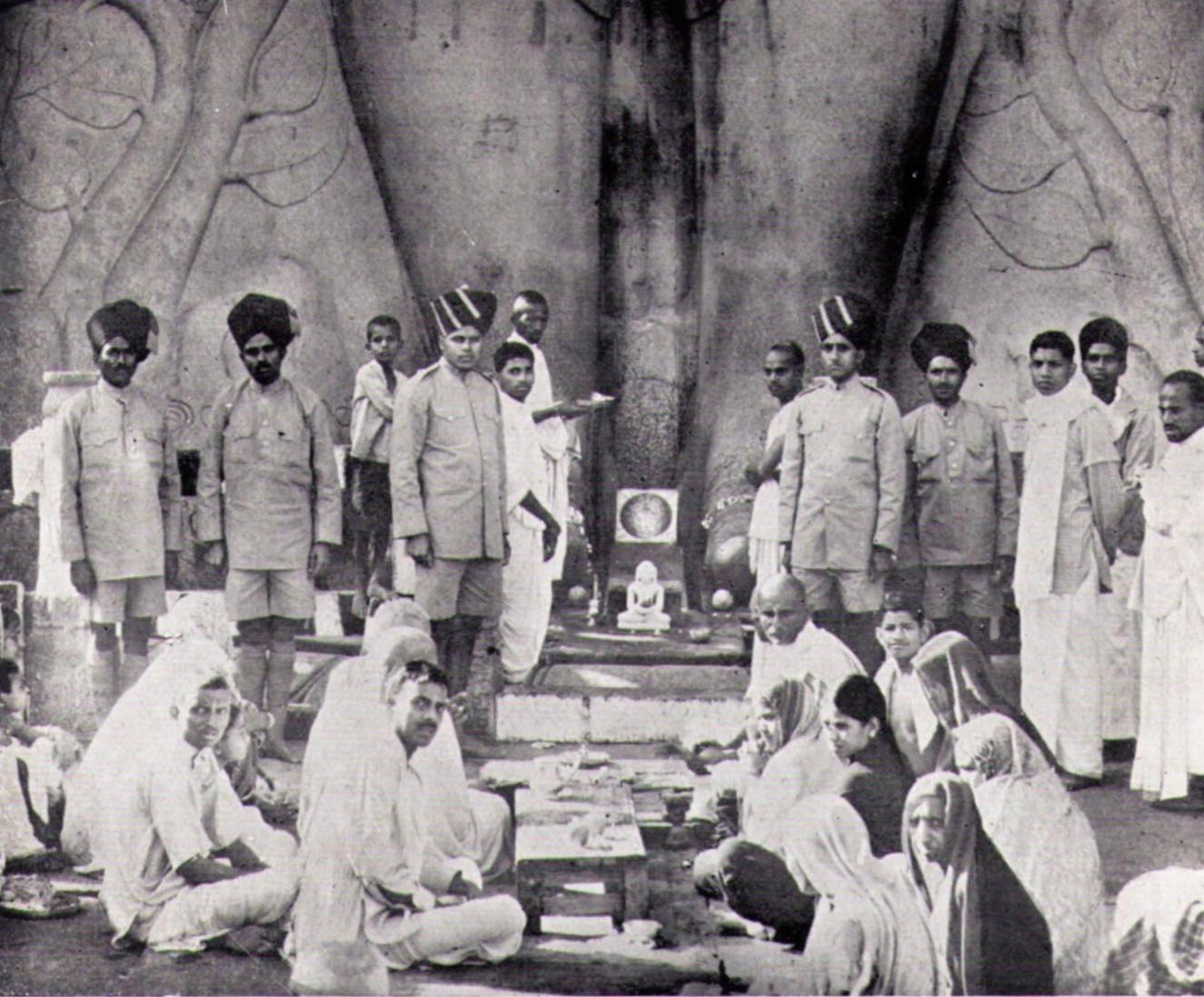
At the feet of Gomateshvara Statue (Shravana Belgola)
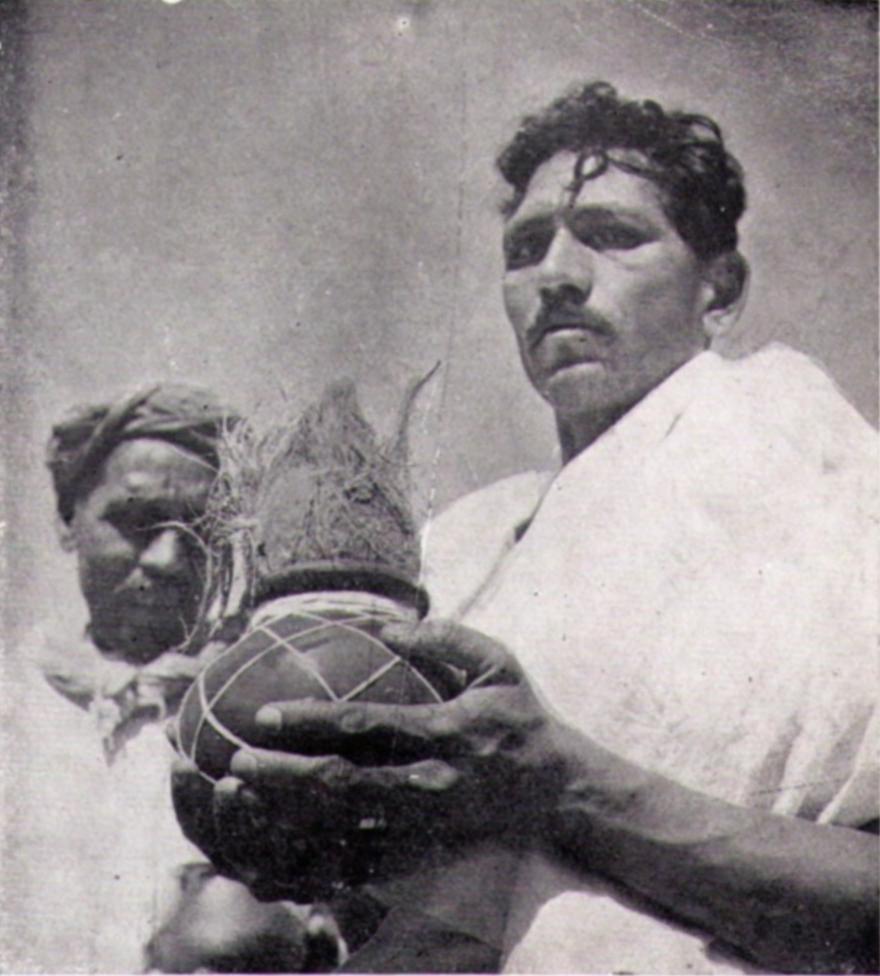
A Jain pilgrim with offering of milk and coconuts for Gomateshvara
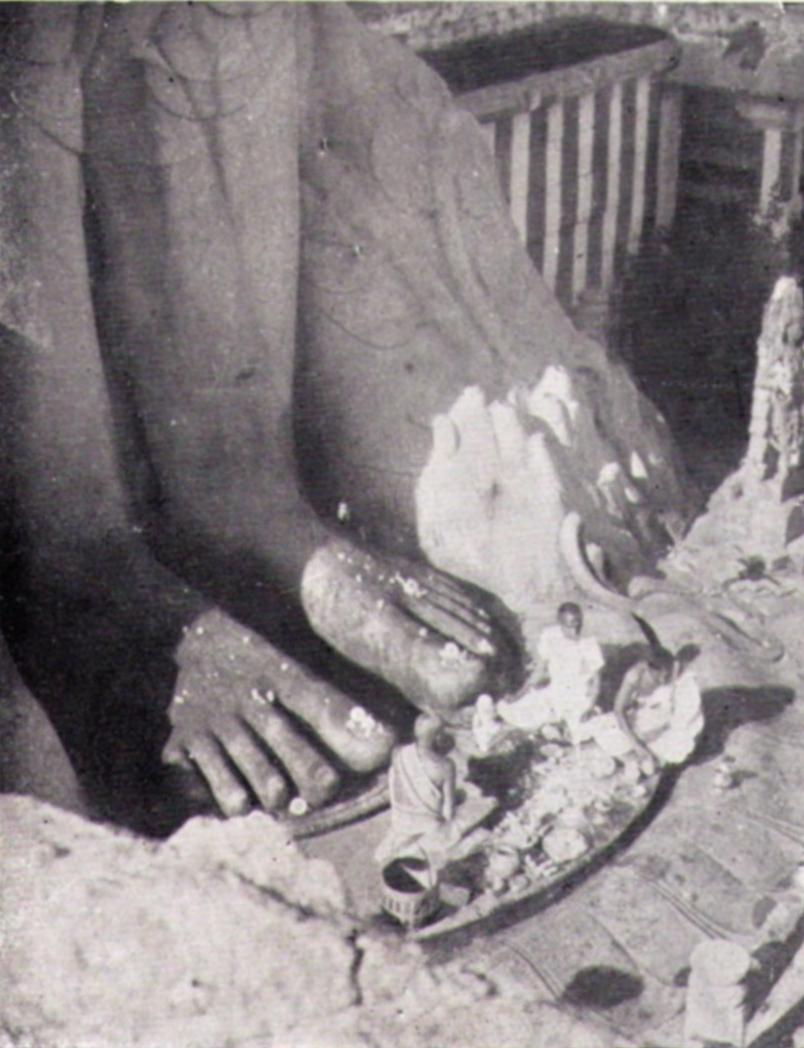
At the feet of Gomateshvara Statue (Shravana Belgola)
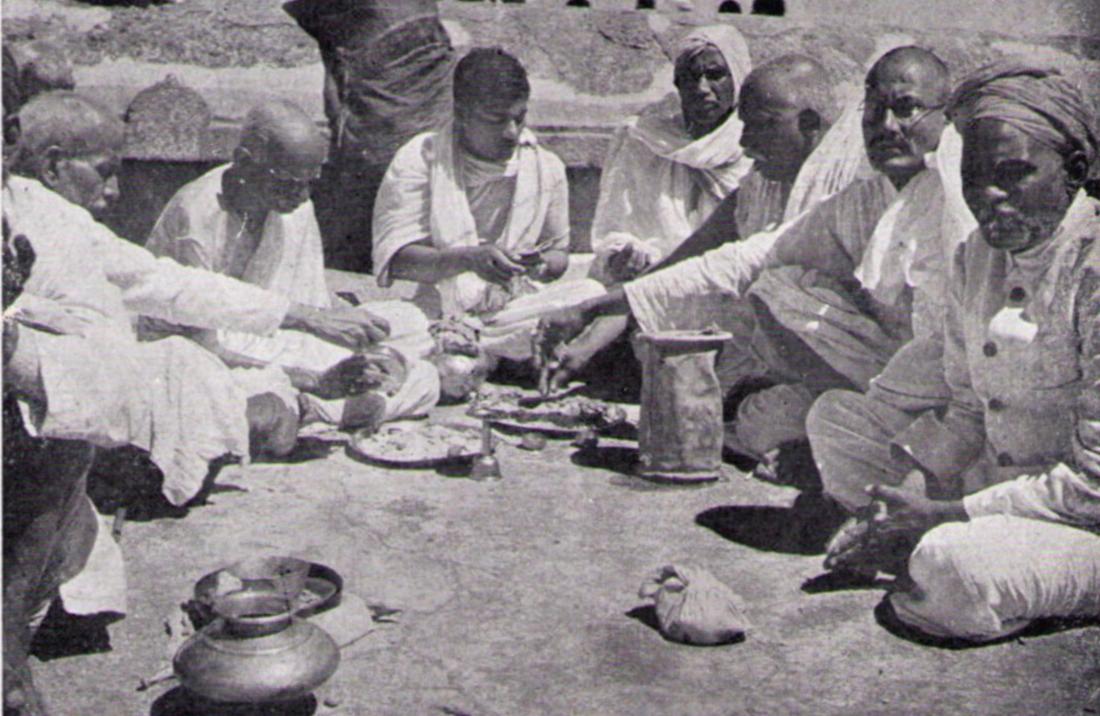
Jain pilgrims performing puja at the feet of Gomateshvara statue
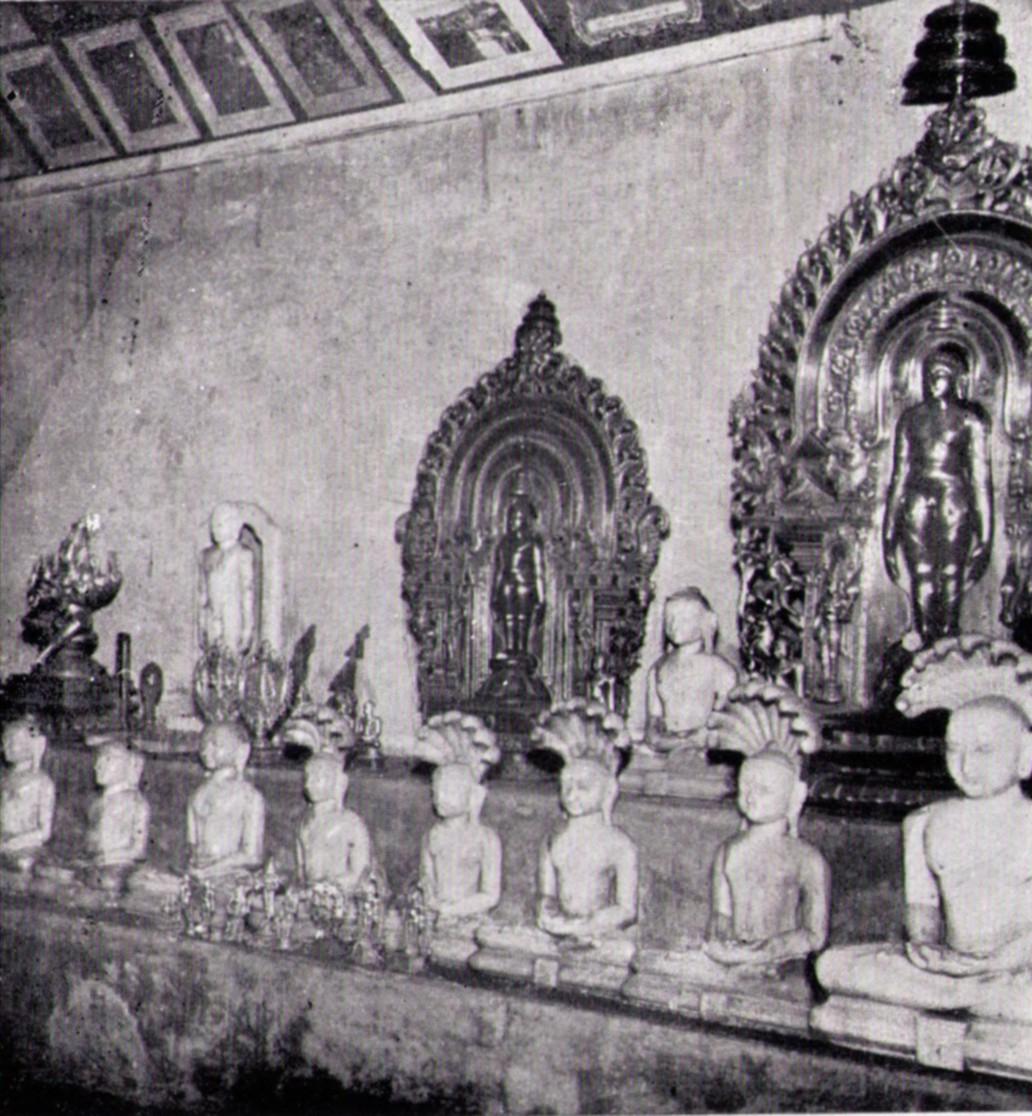
Images of Tirthankaras (Shravana Belgola)
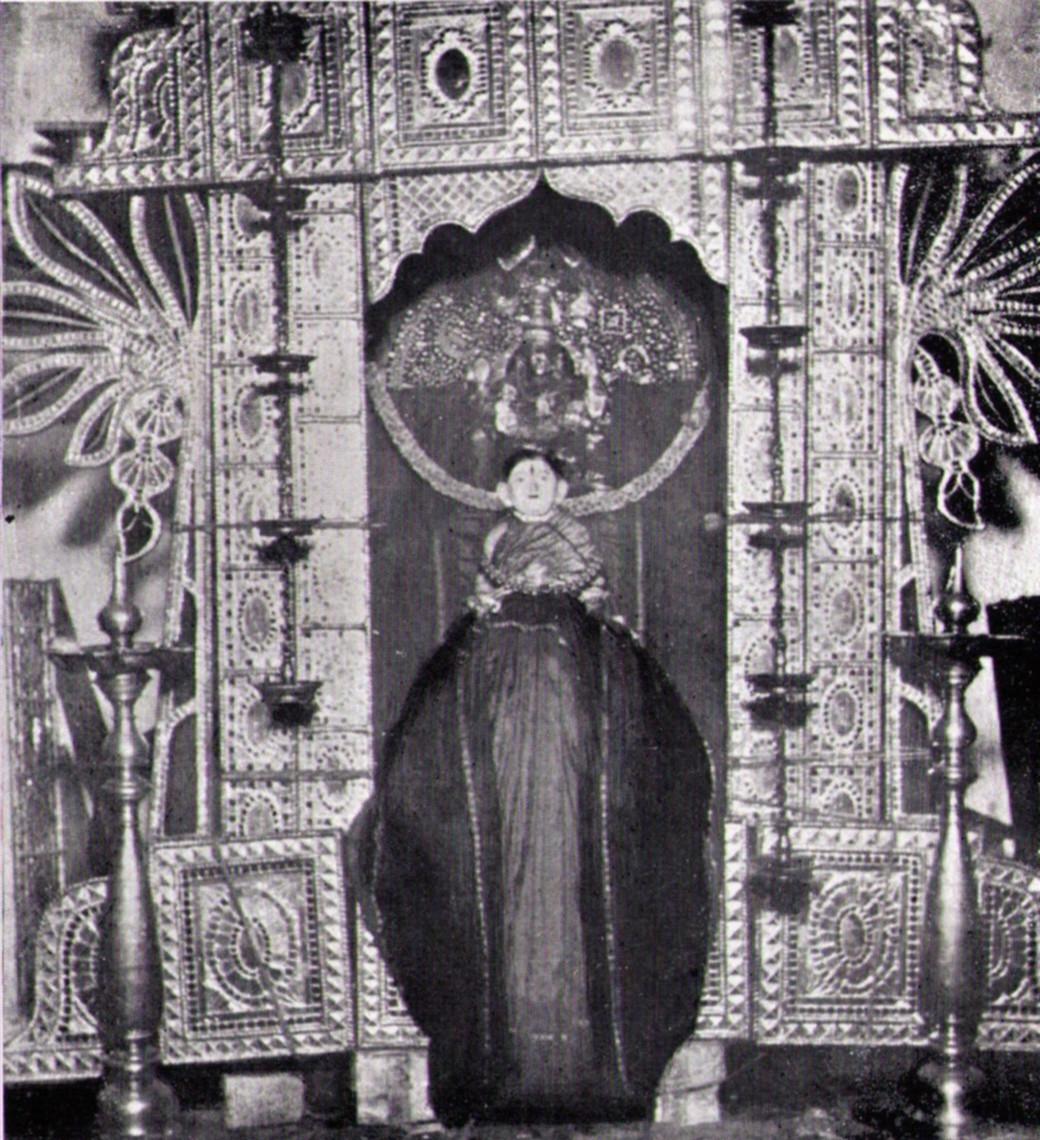
Image of a goddess in the sanctum of a Jain temple
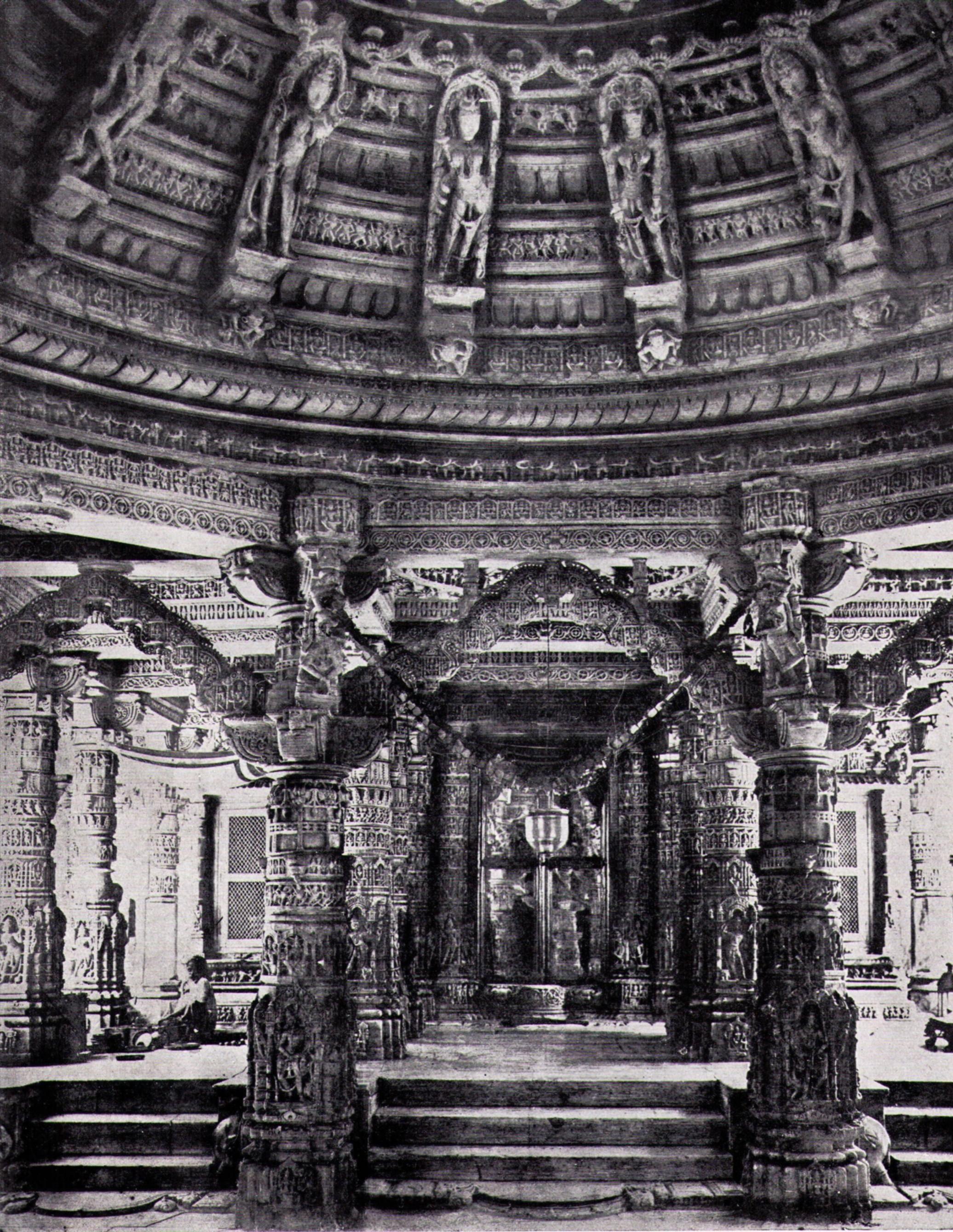
Interior of Dilwara Temple, Mt. Abu

Collection of brasses (Hindu and Jain icons, sacrificial vessels etc.) from central India.
 Paul Thomas
Paul Thomas